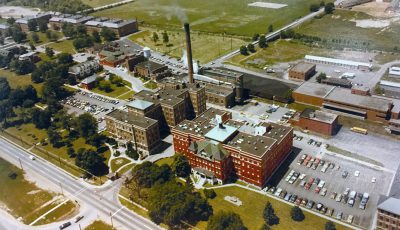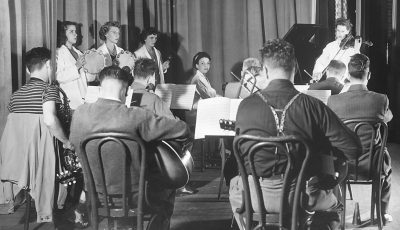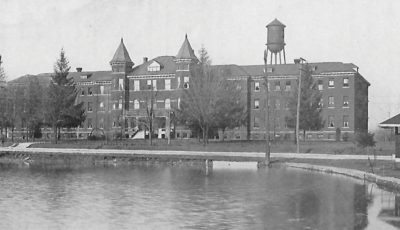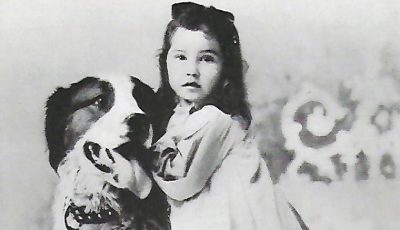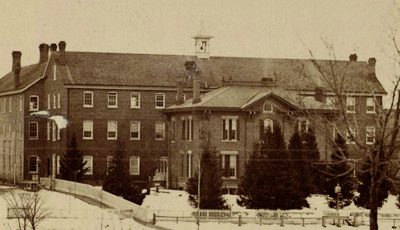The history of Eloise continued (part 5)
 This is part five of a multi-part history of the Wayne County Poorhouse and Asylum, commonly known as Eloise. A major part of the Poorhouse at Eloise was the working farm. All the way back in 1839 when the county bought the black horse tavern it came with a barn, four cows, two oxen and some seeds. The idea was that the poor would work the farm, making themselves useful and providing supplies to the institution. It was also later realized that farmwork, whether it be in the fields or working with animals, was therapeutic for some mental patients as well, something we still do today.
This is part five of a multi-part history of the Wayne County Poorhouse and Asylum, commonly known as Eloise. A major part of the Poorhouse at Eloise was the working farm. All the way back in 1839 when the county bought the black horse tavern it came with a barn, four cows, two oxen and some seeds. The idea was that the poor would work the farm, making themselves useful and providing supplies to the institution. It was also later realized that farmwork, whether it be in the fields or working with animals, was therapeutic for some mental patients as well, something we still do today.
As Eloise grew so did the farm, that early barn was replaced in the later 1800s by several massive barns for separate and specific uses. At its peak the farm encompassed root cellars to store vegetables, grain and horse barns, dairy barns, pig pens, chicken coops, greenhouses, an industrial canning facility, and a tobacco barn. Interestingly they grew their own tobacco, dried it, rolled it and made their own cigarettes for inmates. This was in addition to hired farm worker and supervisor cottages, repair shops, blacksmith shop and all the other accessory buildings you need to run a large scale farm. The farm grew all the fruits, vegetables, meats, eggs, and nearly everything else they needed, it was virtually self-sufficient, at its peak producing 65 tons of food per month. Inmates
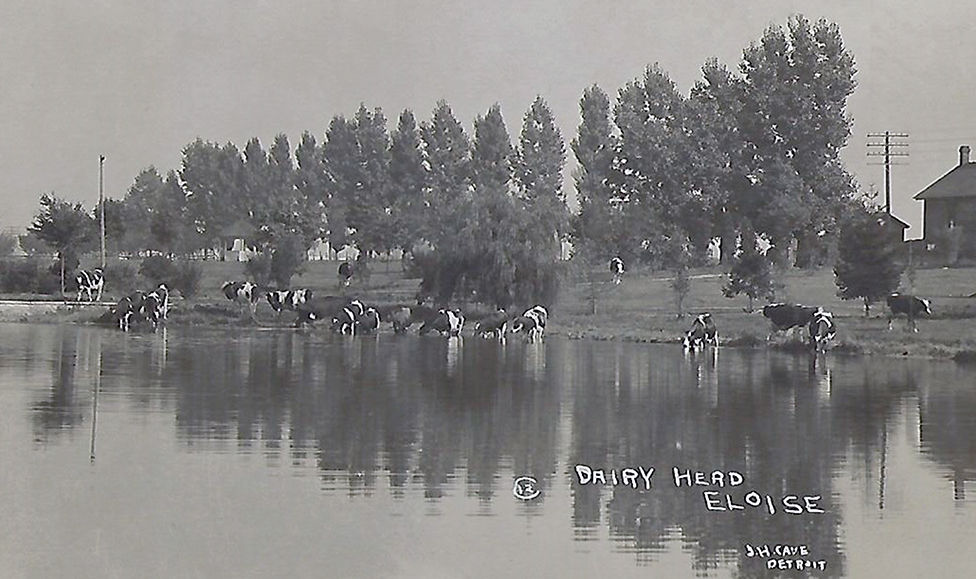
Dairy herd at Eloise
(the people who lived at Eloise, whether in the poorhouse or mental side) would work 4-6 hours a day if they were able, and usually men worked on the farm, but could do other jobs like janitorial, painting, maintenance, or use their trade if they had one. Women generally worked in the kitchens preparing meals, cleaning, doing laundry, or mending clothes. The farm was very successful and was cutting edge for the time, using the latest agricultural technology and science coming out of the agricultural school in Lansing. Eloise was particularly famous for its prize-winning herd of Holstein cattle.
After World War II the farm began to lose money quickly and became a financial burden to the county. Costs were rising and there were less and less people coming to live at the poorhouse. The farm was finally shut down around 1954-1955. The animals were sold off, barns abandoned. Eloise would have to buy all its own food from then on. Today most of the land the farm was on has been built up, with housing developments and a golf course on areas where horses and cattle once grazed. Follow along next time as we go into the 20s and the depression era.


